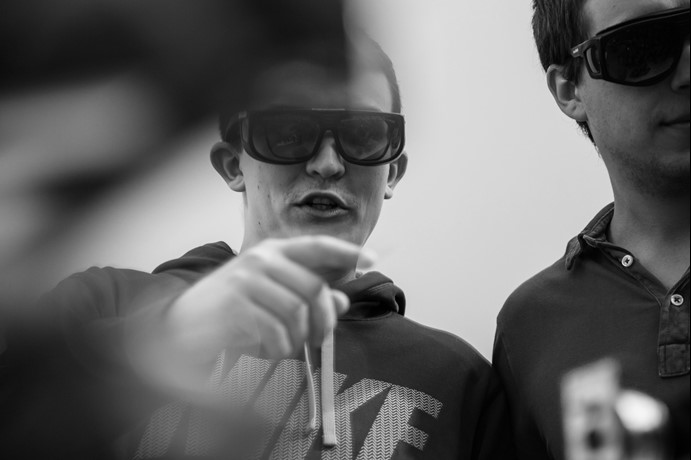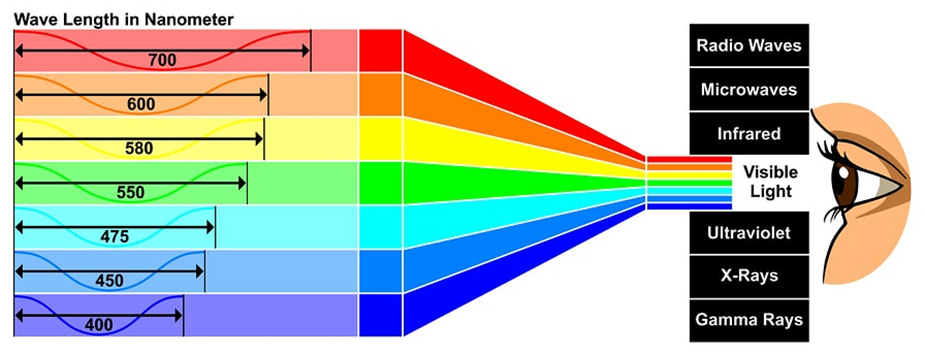Laser light show safety: how your eyes are kept safe
Wednesday, March 14, 2018
Wednesday, March 14, 2018
Have you ever been to a music concert with lasers scanning people during the show? That is one thrilling experience! Traditional lighting such as projectors, stroboscopes and pyrotechnics does a good job illuminating our idols, but lasers add much more value to a live production.
Laser light show safety must be given much consideration in such events in order to keep everyone’s eyes safe. Let’s have a look at the specifications and regulations that make them safe and awesome.
Lasers are light guns, they shoot tons of photons and they come in two flavors: Continuous Wave (CW) or pulsed. During a laser light show, the most impressive experience is when audience scanning is performed and for that, no pulsed laser will pass any Laser Safety Officer (LSO) net.
Want to know what it takes to become the ultimate laser safety resource that producers will hire for that next Roger Waters concert? The Laser Institute of America has an LSO training program for you.
Even at fairly low average power density levels, pulsed lasers such as Q-switched Nd:YAG will hammer your eyes too hard. The shorter the pulse duration, the higher the peak power after all. Even a milliwatt laser can generate a lot of peak power, which is equivalent of giving a quick, repetitive handslap to your eyes. Not exactly retina-friendly, as you can imagine.
In opposition to pulsed lasers, CW lasers provide continuous light pressure and heat, much like a flamethrower does, which sounds appropriate to impress the masses.
Much like that poor cat you addicted to laser spots, producers in the music industry love brighter, sharper lasers providing more photons for your buck. Not all photon throwers will pass the security check though. How much CW laser power will make your LSO happy?
The only laser you can stare at infinitely with your naked eye is a Class 1 laser. It has a maximum power output of 0.39 milliwatts. Let's say that typical shows feature 4-watt lasers (4000 milliwatts) and 1 watt of total output being aimed toward the audience after optics and scanners. Considering that a fully dilated pupil is a circle with a 7 millimeter diameter, that gives a total of 2600 milliwatts per centimeter square of power density if all the power were concentrated in your eye only. Enough to deep-fry those eyeballs!
Laser protection goggles are an option but many of you won’t seriously consider wearing sunglasses at night so producers need to decrease average power and/or power density, making lasers dimmer and/or fuzzier. Hot, burning spots versus smooth shapes.

According to standards such as ANSI Z136.10 and IEC 60825-3, the maximum permissible exposure (MPE) for your eye is 2.5 milliwatts per centimeter square during 0.25 second. The laser is allowed to shoot continuously because a healthy eye will have its blinking reflex switched on after a quarter of a second and save you from potential damage.
For scanning laser beams, MPE is higher: 10 milliwatts per centimeter square, because the dwell time in your eye is considered lower than a quarter of a second. Those MPE levels are chosen with a safety factor, but the International Laser Display Association consistently reports public laser light shows to peak at 100 milliwatts per centimeter square…
Ensure you purchase the most optimal solution for your measurement needs with this checklist. Download it now, it's helpful and free!Buyer's checklist for laser power & energy meters
They actually do not object to such levels in specific situations. They have proposed conditions to keep it safe, for example making the dwell time in your eye very short, like 1 millisecond.
Considering the billions of eyes exposed to laser light around the globe during the last decades, the number of injuries recorded is actually surprisingly low. According to Patrick Murphy and Greg Makhov, there are multiple reasons why we got lucky during shows and audience scanning, for example when fairly high-divergence beams are used.
Zero risk is a state that does not exist and we must therefore follow safety guidelines. Serious risk assessment and laser power measurement at the point of the closest audience access are key. A company like Gentec-EO provides the exact measurement tools required.
Let me share an example. I recently rented a Class 3B CW blue laser for a video recording of an actual music performance.
The 3B classification told me that the output power of this visible laser lies somewhere between 5 and 499 milliwatts.
Visible light spans from blue to red wavelengths in the electromagnetic spectrum: these are the colours you see on a rainbow, from around 380 to 700 nanometers wavelengths.

Commercial video cameras are sensitive to those wavelengths and the ones we had in the studio got their sensors saturated, even by the reflections of this laser light. 499 milliwatts of power could have seriously injured our eyes. How much power did this laser actually provide and what was the safest way to use it?
The ILDA says that we need to measure and control our lasers and attenuation systems at all times. We used a calibrated 10-mm aperture PH100-Si-HA photodiode connected to a rugged MAESTRO monitor from Gentec-EO to see the average power getting out of this rental laser system. We measured the total average power by concentrating all its light on a 7-mm diameter steady spot upon the sensor.
We got a measurement of 20 milliwatts. That is 52 milliwatts per centimeter square of power density. That’s above the standard thresholds, so we decided to use defocused, fast moving beams, in addition to enlarged light patterns, to avoid scorching our eyes at all times. That made this setup safe for everyone and well, it just paid off.
If your laser beams manage to hit controlled targets well above everyone's heads during a show and if light shutdown systems are in place in case too much power ends up in the audience or in our artists eyes, then producers can crank up laser power a bit.
As soon as laser light is targeted toward any eyeball, strict limitations apply and they are given by international standards. Local authorities, producers and venue owners are then responsible to keep people safe.
Having caution signs, backup methods and exposure levels being monitored by laser power detectors are required. Gentec-EO designs unique portable laser power meters for fast, calibrated and affordable measurement, helping laser light show productions reach the highest quality standards and maximum amazement!
Have you seen other applications in which lasers were being used purely for that "wow" effect? Comment down below, and feel free to let us know what we should talk about next!